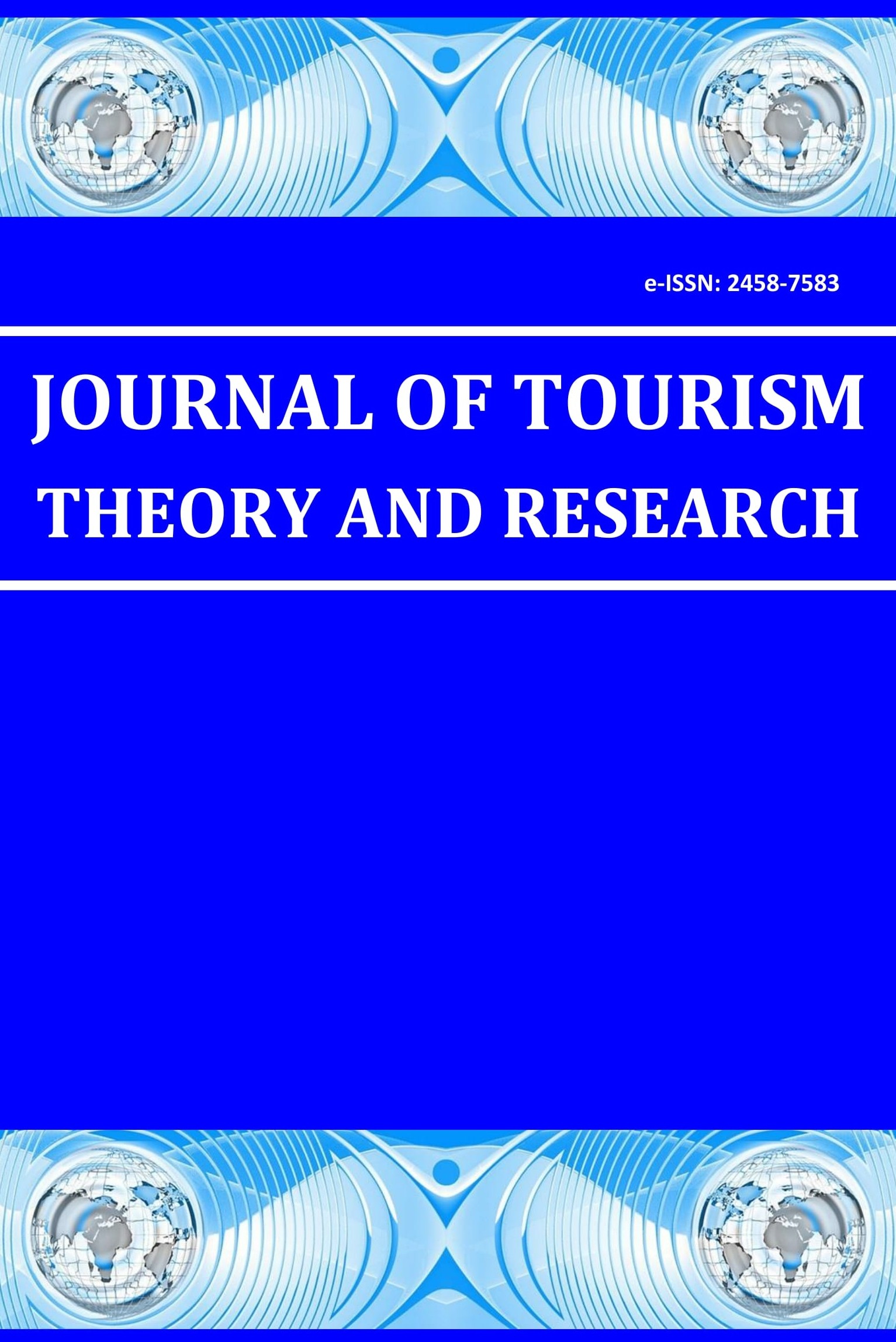Periodic solutions and global indeterminacy in a model of sustainable tourism
Periodic solutions and global indeterminacy in a model of sustainable tourism
Sustainable tourism, Complex dynamics, Economic growth Poverty trap,
___
- Algaba, A., Freire, E., & Gamero, E. (1999). Hypernormal forms for equilibria of vector fields. Codimension one linear degeneracies. Rocky Mountain Journal of Mathematics, 29, 13-45.
- Baggio, R. (2008). Symptoms of complexity in a tourism system. Tourism Analysis, 13(1), 1-20.
- Bella, G., & Mattana, P. (2014). Global indeterminacy of the equilibrium in the Chamley model of endogenous growth in the vicinity of a Bogdanov-Takens bifurcation. Mathematical Social Sciences, 71, 69-79.
- Benhabib, J., Schmitt-Grohé, S., & Uribe, M. (2001). The perils of Taylor rules. Journal of Economic Theory, 96, 40-69.
- Bornhorst, T., Ritchie, J., & Sheehan, L. (2010). Determinants of Tourism Success for DMOs & destinations: An Empirical Examination of Stakeholders' Perspectives. Tourism Management, 31, 572-589.
- Brau, R., Lanza, A., & Pigliaru, F. (2007). How fast are small tourism countries growing? Evidence from the data for 1980-2003. Tourism Economics, 13(4), 603-613.
- Brida, J. G., Sanchez Carrera, E. J., & Risso, W. A. (2008). Tourism's Impact on Long-Run Mexican Economic Growth. Economics Bulletin, 3(21), 1-8.
- Butler, R. (1980). The concept of a tourist area cycle of evolution. Canadian Geographer, 24, 5-12.
- Cole, S. (2009). A logistic tourism model: Resort Cycles, Globalization and Chaos. Annals of Tourism Research, 36(4), 689-714.
- Finco, M. V. A. (2009). Poverty-Environment Trap: A non linear probit model applied to rural areas in the North of Brazil. American-Eurasian J. Agric. & Environ. Sci., 5(4), 533-539.
- Gamero, E., Freire, E., & Ponce, E. (1991). Normal forms for planar systems with nilpotent linear part. In R. Seydel, F. W. Schneider, T. Küpper, & H. Troger (Eds.), Bifurcation and Chaos: Analysis,
- Algorithms, Applications. International Series of Numerical Mathematics, (pp. 123-12). Basel, Birkhäuser.
- Katircioglu, S. T. (2009). Testing the tourism-led growth hypothesis: The case of Malta. Acta Oeconomica, 59(3), 331-343.
- Mattana, P., & Venturi, B. (1999). Existence and stability of periodic solutions in the dynamics of endogenous growth. International Review of Economics and Business, 46, 259-284.
- Musu, I. (1995). Transitional Dynamics to Optimal Sustainable Growth. FEEM Working Paper 50.95.
- Nowak, J. J., Sahli, M., & Cortés-Jiménez, I. (2007). Tourism, capital good imports and economic growth: theory and evidence for Spain. Tourism Economics, 13(4), 515-536.
- Rosendahl, K. E. (1996). Does improved environmental policy enhance economic growth?. Environmental and Resource Economics, 9, 341-364.
- Sachs, J. D., & Warner, A. M. (2001). Natural resources and economic development: The curse of natural resources. European Economic Review, 45, 827-838.
- Schubert, F. S., Brida, J. G., & Risso, W. A. (2010). The impacts of international Tourism demand on economic growth of small economies dependent of tourism. Tourism Management, 32(2), 377-385.
- Shang, D., & Han, M. (2005). The existence of homoclinic orbits to saddle-focus. Applied Mathematics and Computation, 163, 621-631.
- Shilnikov, L. P. (1965). A case of the existence of a denumerate set of periodic motions. Sov. Math. Docl., 6, 163-166.
- Başlangıç: 2015
- Yayıncı: Mahmut DEMİR
Periodic solutions and global indeterminacy in a model of sustainable tourism
Sustainable development and tourism in the coastal urban area of Voula in Attica Region
Agisilaos Economou, Roido Miotula
A new knowledge management model for the conservation of historical sites
Mahta SAREMİ, Hassan DARABİ, Mohammad Javad AMİRİ, Golamreza Nabi BİDHENDİ, Homa Eirani BEHBAHANİ
Tutankhamun Exhibition at the British Museum in 1972 a historical perspective
